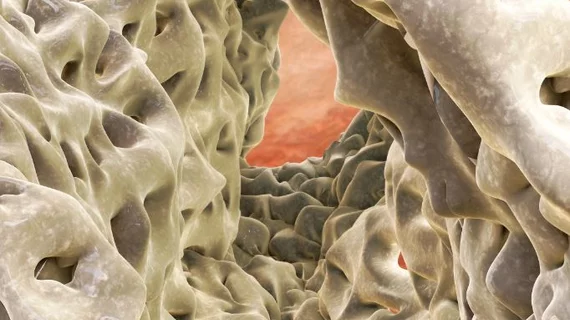AI spots broken bones on x-rays, identifies potential osteoporosis patients
A new artificial intelligence tool topped manual methods for flagging broken bones on x-rays, weeding-out patients who are more at risk of osteoporosis.
That’s according to creators of the platform—X-ray Artificial Intelligence Tool (XRAIT)—set to be presented at the Endocrine Society’s annual meeting. ENDO 2020 will take place as an online-only gathering June 8-22, due to the coronavirus.
Australian researchers trained their natural language processing approach on thousands of radiology reports and detected nearly a five-fold higher number of fractures or breaks than manual-based techniques.
“By improving identification of patients needing osteoporosis treatment or prevention, XRAIT may help reduce the risk of a second fracture and the overall burden of illness and death from osteoporosis,” Jacqueline Center, PhD, head of the Clinical Studies and Epidemiology Lab at Garvan Institute of Medical Research in Sydney, said in a statement.
Nearly 44 million Americans—mostly women—are at risk of osteoporosis and are more likely to experience a fracture due to low bone mass. Despite this, only 2 in 10 older women who actually do break a bone receive testing or treatment for the brittle bone condition.
In their study, Center and colleagues used 5,089 radiology reports taken from patients over 50 years old who were admitted to an emergency department and received a bone imaging exam over the past three months.
The researchers then compared the performance of XRAIT against manual reviewers for detecting fractures in 224 patients referred to a fracture liaison service during the study period. Looking over the results, XRAIT picked out 349 individuals compared to 98 identified by the clinicians.
And in order to further solidify their results, Center et al. had their AI read over another 327 imaging reports from an independent group of Australians over 60-years-old who were part of a large osteoporosis epidemiology study. Again, XRAIT performed well, correctly identifying fractures 70% of the time and nonfractures in 90% of cases.
This suggests the XRAIT tool can be easily used by other hospitals, Center noted. She went on to say that the approach may prove highly beneficial for efficiently utilizing imaging resources, given that manually reading reports often takes a while and can miss at-risk patients.
“With XRAIT, limited healthcare resources can be optimized to manage the patients identified as at-risk rather than used on the identification process itself,” Center added in the statement.

